Nestled in Nara, Yakushi-ji Temple stands as a tribute to 1300 years of Japan’s Buddhist heritage, enchanting visitors with its stunning architecture and spiritual ambiance. As they explore the intricate designs of the Kondo and the majestic Yakushi Sanzon Buddha statues, guests encounter a profound sense of history intertwined with artistry. This remarkable site not only serves as a pilgrimage destination but also invites travelers to ponder its cultural significance. Curious about what makes each corner of this temple resonate with stories of the past? The journey through its sacred grounds reveals even more.
Overview of Yakushi-ji Temple
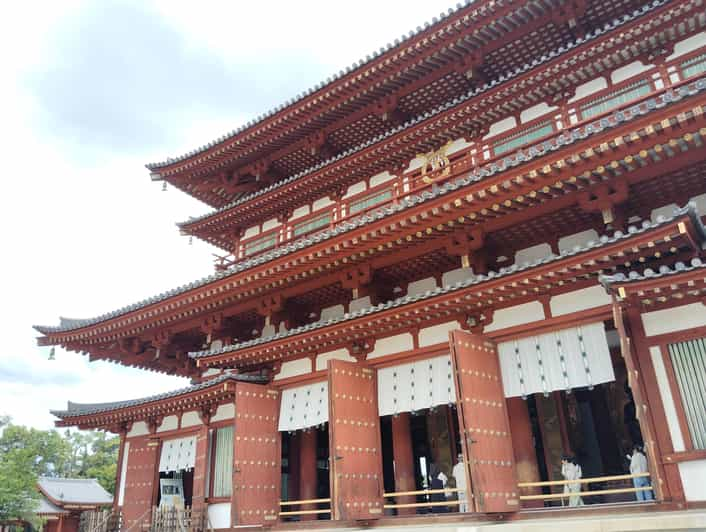
Yakushi-ji Temple stands as a remarkable tribute to Japan’s rich Buddhist heritage, founded in the 7th century. This temple, located in Nara, showcases the spiritual devotion and artistic brilliance of its time.
As one of the most significant Buddhist sites, it reflects the cultural depth and architectural innovation of the Nara period. Visitors marvel at its well-preserved structures, which include the main hall and pagodas, each telling a story of Japan’s historical journey.
The temple not only serves as a site of worship but also as a center for learning, attracting scholars and pilgrims alike.
Yakushi-ji remains an essential symbol of Japan’s enduring connection to Buddhism, inviting exploration and reflection on its timeless beauty.
It's also worth checking out some other tours and experiences nearby.
Architectural Highlights
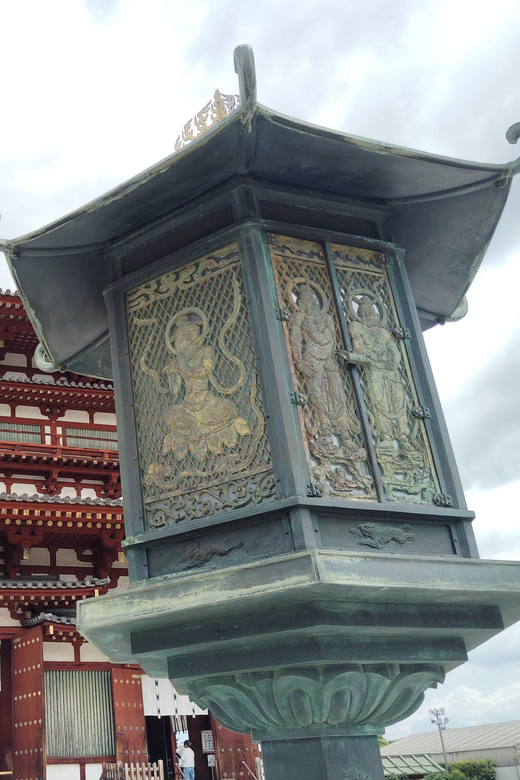
The architectural highlights of Yakushi-ji Temple showcase a blend of artistry and spiritual significance that captivates visitors.
Each structure reflects the temple’s rich heritage and craftsmanship, making it a must-see destination.
Here are four key features:
-
Kondo (Main Hall): This stunning hall houses the Yakushi Sanzon Buddha statues, celebrated for their exquisite black sheen.
-
East Pagoda: A rare example of Nara period architecture, this pagoda stands as a designated National Treasure.
-
West Pagoda: Known for its visual balance with the East Pagoda, it complements the temple’s overall aesthetic.
-
Daikodo (Great Lecture Hall): The largest building, historically significant for Buddhist teachings and home to the revered Miroku Buddha.
These elements combine to create an inspiring spiritual atmosphere.
Historical Importance
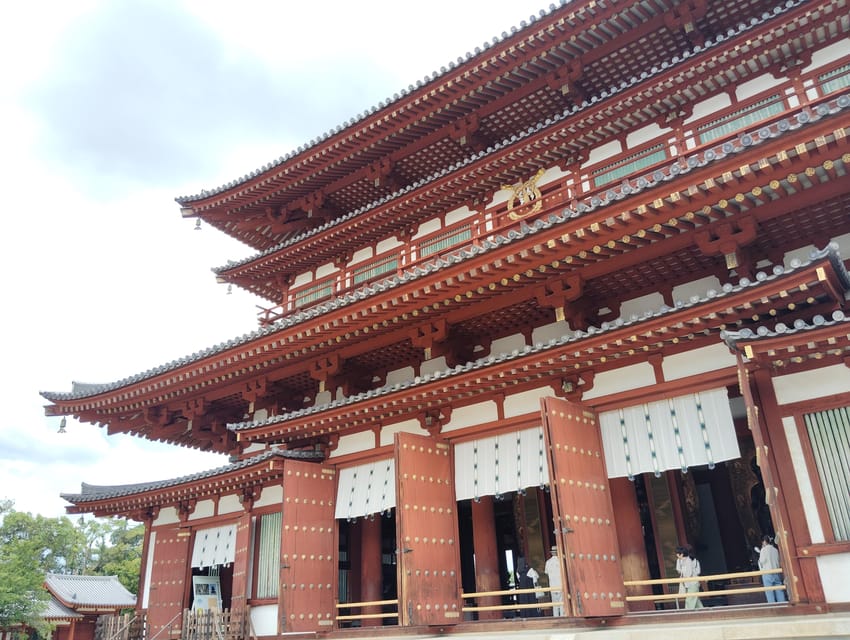
Recognizing its historical importance, Yakushi-ji Temple stands as a symbol of Japan’s rich Buddhist heritage. Founded in the 7th century, it showcases the evolution of Buddhist practices and architectural styles throughout different periods. The temple’s structures, such as the East Pagoda and Toin-do (East Hall), reflect Japan’s early Zen influences and Nara period artistry.
| Feature | Significance |
|---|---|
| East Pagoda | A rare example of Nara period architecture, a National Treasure. |
| Toin-do (East Hall) | Japan’s oldest Zen architecture, emphasizing simplicity and tranquility. |
| Kondo (Main Hall) | Houses revered Yakushi Sanzon Buddha statues, symbolizing healing. |
| Daikodo | The largest hall, historically crucial for Buddhist teachings. |
Through these elements, the temple remains a crucial link to Japan’s spiritual and historical narrative.
Cultural Significance
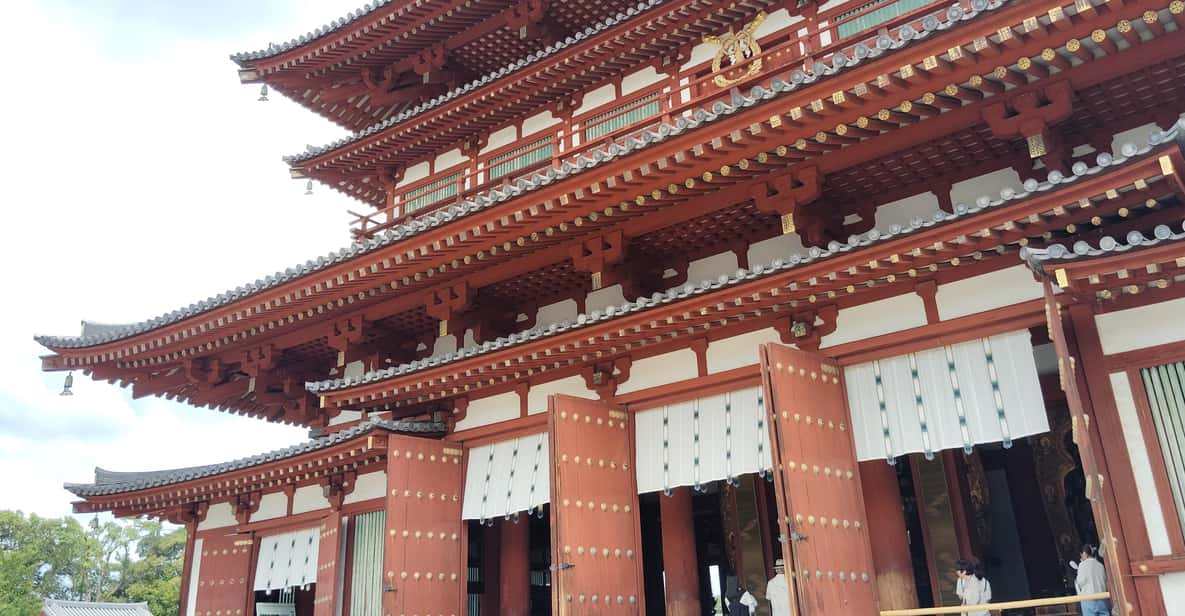
Delving into the cultural significance of Yakushi-ji Temple reveals a rich tapestry of historical and spiritual narratives that continue to influence Japanese Buddhism today.
This temple stands as a beacon of cultural heritage, embodying key themes such as:
-
Spiritual Pilgrimage: Originating from the 7th century, it represents the journey of seekers of enlightenment.
-
Artistic Expression: The temple showcases exquisite craftsmanship, reflecting the artistic styles of its time.
-
Buddhist Education: Historically, it served as a center for Buddhist teachings and practices.
-
Community Engagement: Yakushi-ji fosters a sense of belonging, drawing pilgrims and travelers alike, thereby nurturing ongoing cultural exchanges.
Through these elements, Yakushi-ji remains essential to Japan’s spiritual landscape, inspiring generations to come.
Tour Experience
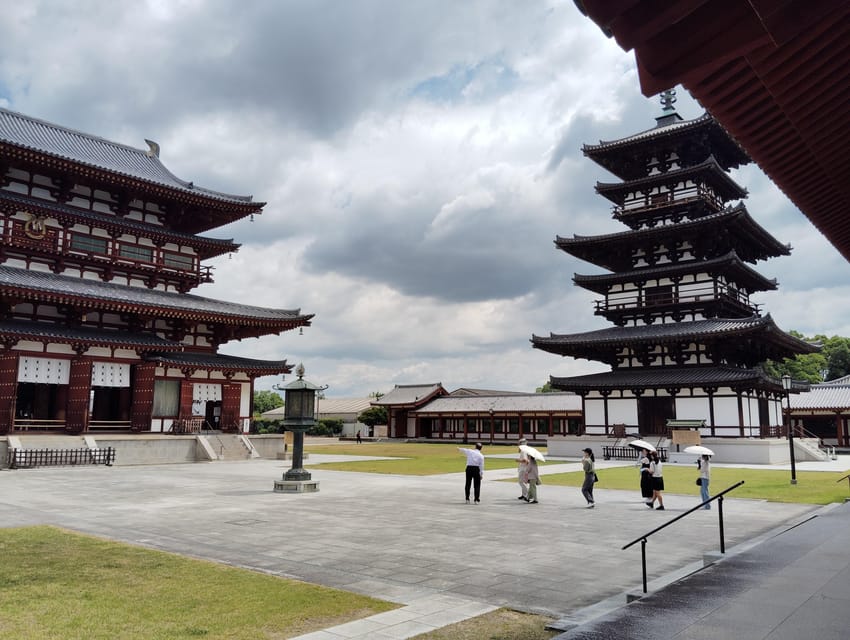
Exploring Yakushi-ji Temple offers visitors an immersive experience that connects them with centuries of history and spiritual significance.
The guided tour, lasting one hour, takes participants through the temple’s remarkable architecture, including the stunning Kondo and its revered Yakushi Sanzon Buddha statues.
As they stroll through the serene grounds, guests learn about the East Pagoda’s historical importance and the vibrant stories behind the Daikodo.
Knowledgeable guides share insights in both English and Japanese, making the experience accessible to all.
With the option for private groups, visitors can investigate deeper into the temple’s rich narratives.
This tour not only educates but also inspires, inviting everyone to appreciate the timeless beauty of Yakushi-ji Temple.
Visiting Information
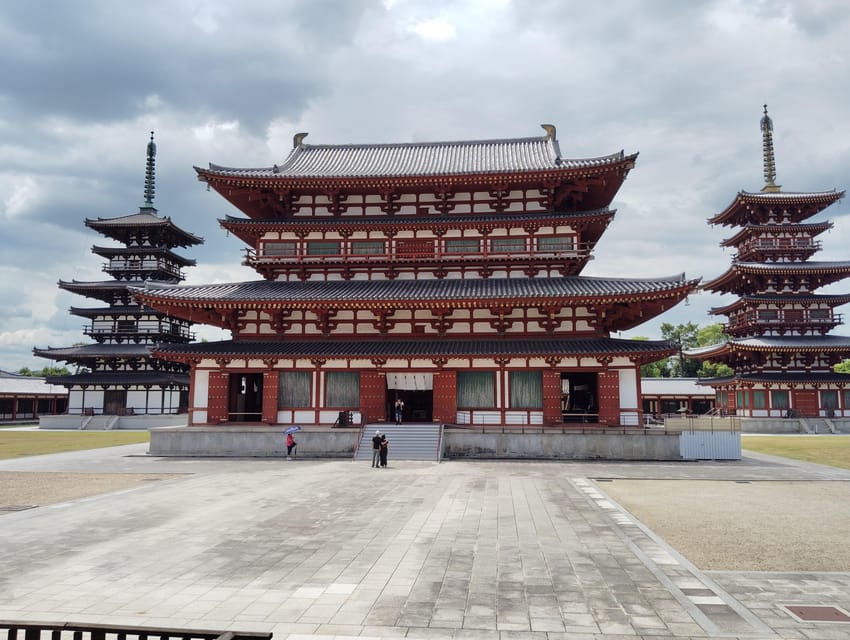
Visitors planning a trip to Yakushi-ji Temple will find it essential to know key details that enhance their experience. Here are four important points to reflect on:
-
Duration: The tour lasts about one hour, allowing for a thorough yet concise overview of the temple’s highlights.
-
Languages: Tours are available in English and Japanese, catering to a diverse audience.
-
Pricing: Visitors can save up to 20%, with prices reduced from $83.35 to $66.68 per person.
-
Cancellation Policy: Free cancellation is available up to 24 hours in advance for a full refund, providing peace of mind when making plans.
Being aware of these details can help you make the most of your visit to this historic site.
Travel Tips
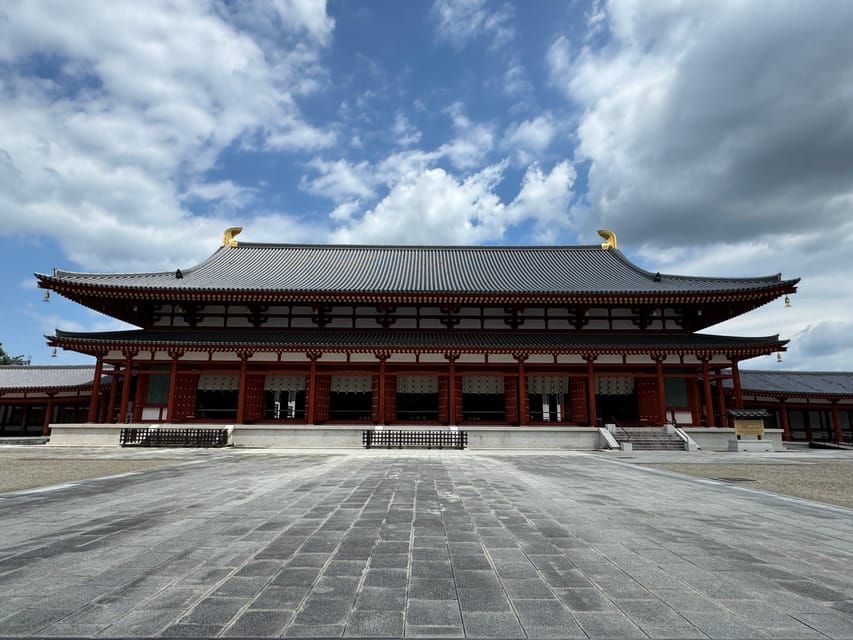
When planning a trip to Yakushi-ji Temple, travelers should consider a few essential tips to guarantee a smooth and enjoyable experience.
First, it’s best to arrive early in the day to avoid crowds and fully appreciate the serene atmosphere.
Wear comfortable shoes, as exploring the temple grounds involves walking.
Visitors should also check the weather, as the temple’s beauty shines in different seasons.
Bring a camera to capture the stunning architecture, especially the Kondo and pagodas.
If traveling with a group, consider booking a private tour for a more personalized experience.
Nearby Attractions
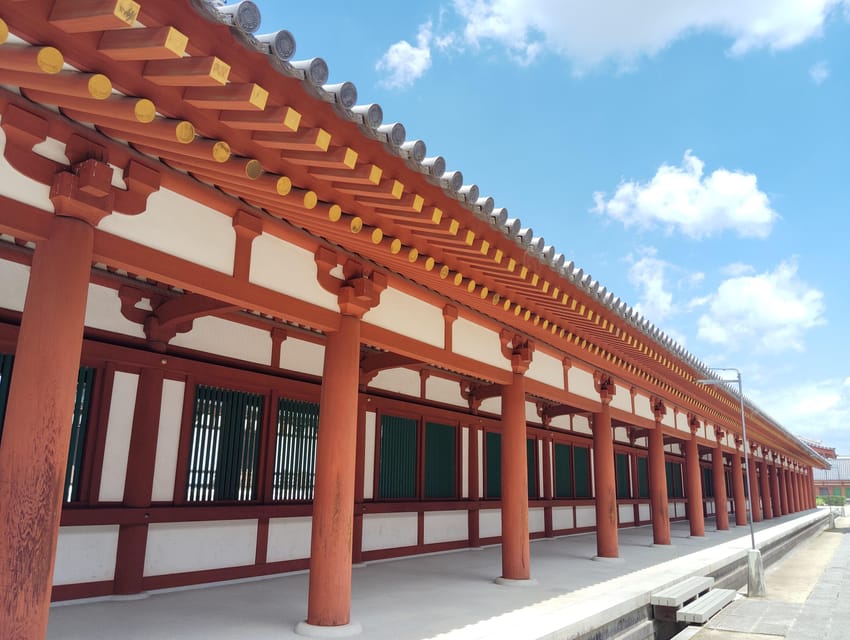
Yakushi-ji Temple is surrounded by several enchanting attractions that complement its historic charm.
Visitors can easily explore these nearby sites, each offering unique insights into Nara’s rich cultural heritage.
Here are four must-see attractions:
-
Todai-ji Temple: Home to the Great Buddha statue, it’s an iconic symbol of Nara and a UNESCO World Heritage Site.
-
Nara Park: Famous for its free-roaming deer, this sprawling park offers a serene setting for leisurely walks.
-
Kasuga-taisha Shrine: Renowned for its stunning lanterns and sacred forest, it’s a peaceful retreat just a short distance away.
-
Naramachi: This historic district features traditional wooden merchant houses, providing a glimpse into Nara’s past.
These attractions make for a rewarding day of exploration near Yakushi-ji Temple.
Here's a few more nearby tours and experiences we think you'll like.
Frequently Asked Questions
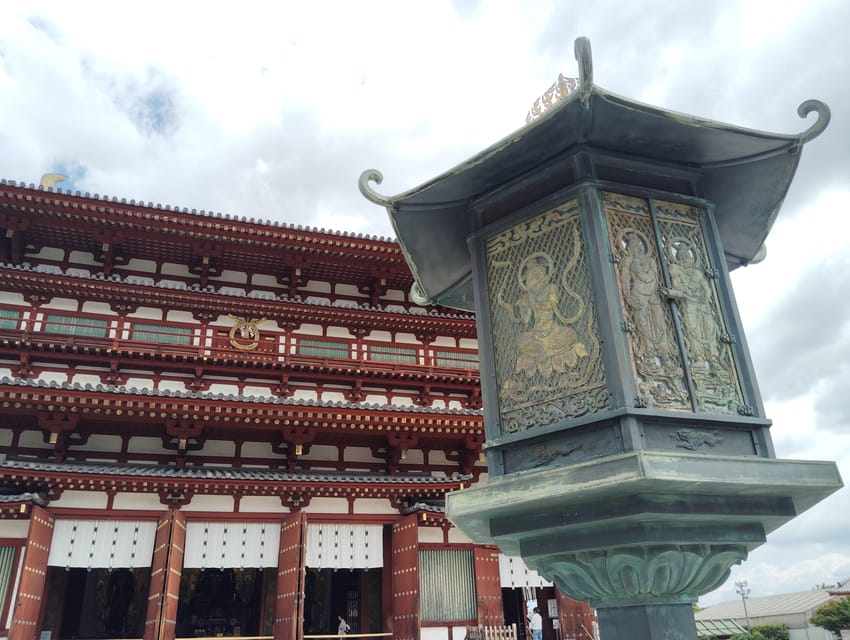
What Is the Best Time to Visit Yakushi-Ji Temple?
The best time to visit Yakushi-ji Temple is during spring or autumn. Visitors enjoy mild weather, vibrant foliage, and fewer crowds, enhancing their experience of the temple’s stunning architecture and serene atmosphere.
Are There Any Dress Codes for Visiting the Temple?
When visiting Yakushi-ji Temple, there’s no strict dress code. However, visitors should dress respectfully, avoiding revealing clothing. Comfortable shoes are recommended, as exploring the temple grounds often involves walking over uneven surfaces.
Is Photography Allowed Inside Yakushi-Ji Temple?
Photography isn’t allowed inside Yakushi-ji Temple to preserve its sacred atmosphere and artworks. Visitors can appreciate the stunning architecture and spiritual significance without capturing images, ensuring respect for the temple’s deep cultural heritage.
Are There Any Food or Beverage Options Nearby?
Nearby Yakushi-ji Temple, visitors can find various food and beverage options, including traditional Japanese eateries and cafes. These establishments offer a delightful way to enjoy local cuisine after exploring the temple’s rich cultural heritage.
Can I Purchase Souvenirs at Yakushi-Ji Temple?
Yes, visitors can purchase souvenirs at Yakushi-ji Temple. The temple features shops offering a variety of items, including traditional crafts and religious artifacts, allowing guests to take home a piece of its rich history.
Not for you? Here's more of our most recent tour reviews happening neaby
- From Nara:Half-Day Bus Tour to UNESCO Heritage&Mt. Wakakusa
- Nara: Highlights of Nara in 3 Hours – Guided Tour
- Nara: Todaiji, Kasuga and Nara Park
- From Osaka: Kyoto and Nara Day Tour With Deer Sightings
- From Osaka: Kyoto and Nara Day Tour With Deer Sightings
- Nara Early Bird Tour (Kyoto Station Departure)
- Nara: Half Day Local Guide– Big Buddha, Deer, Shrine, Forest
- Nara: Todai-ji, Kasuga and Nara Park (Russian Language)
- Nara: Todaiji, Kasuga, Nara Park and Hozan-ji (Extended)
- Nara: Discover Every Bit of Tohdaiji-Temple in 2 Hours
- Nara: Yakushi-ji & Toshodai-ji – Timeless in 3 Hours
- ULTIMATE NARA WALK: Temples, Knives, Crafts & Tea Ceremony
- Nara: Hiking the Forest, Big Buddha, Deer, Shrine, Sun Set
- Nara: 1 Day Local Guide– Big Buddha, Deer, Shrine, Old Town
- Nara: Private Half Day Local Guide
Recap
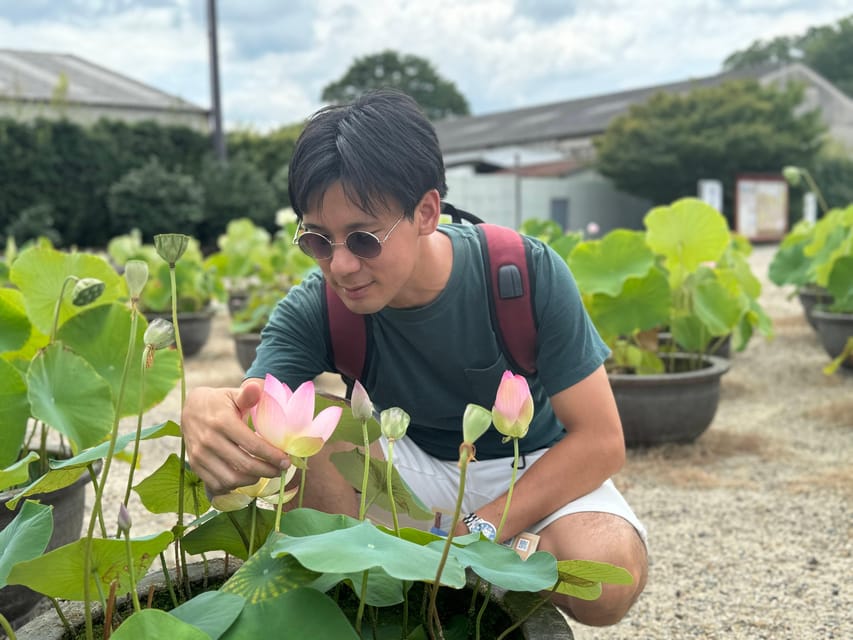
Yakushi-ji Temple stands as a symbol of Japan’s enduring Buddhist heritage, enthralling visitors with its stunning architecture and rich history. In just one hour, guests can enjoy the beauty and spiritual significance of this iconic site. Whether you’re a pilgrim seeking solace or a tourist keen to explore, Yakushi-ji offers an enriching experience that resonates long after your visit. Don’t miss the chance to uncover the layers of cultural legacy that make this temple truly remarkable.
